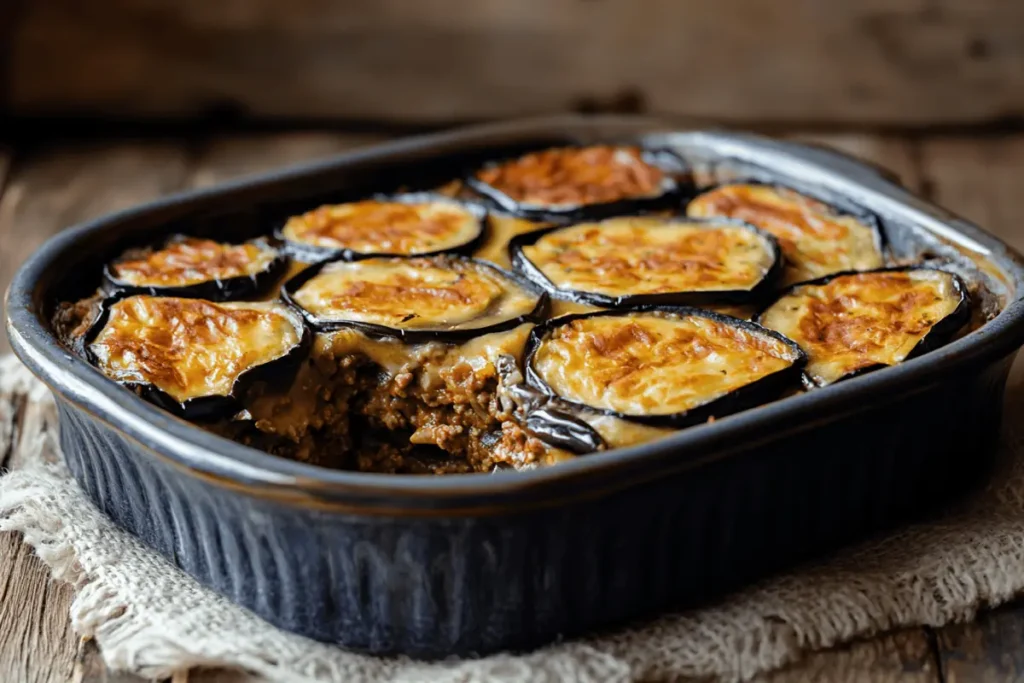When you think about Greek cuisine, your mind probably conjures up images of vibrant salads, flaky pastries, and aromatic grilled meats. Indeed, traditional Greek food recipes showcase fresh ingredients, bold seasonings, and deep connections to centuries-old traditions. Moreover, these dishes often celebrate simplicity. Chefs rely on olive oil, herbs, and seasonal produce rather than heavy sauces. As a result, diners can savor the pure essence of each component. Over time, these dishes have spread around the world, making it easy to enjoy these delights no matter where you live. Thus, by learning a few key recipes and techniques, you can bring authentic Greek flavors right into your kitchen.
Table of contents
Embracing the Richness of Traditional Greek Food Recipes
The appeal of traditional Greek food recipes lies in their ability to blend healthful eating with amazing flavor. Greece’s climate supports abundant produce, from juicy tomatoes and crisp cucumbers to lemons and grapes. In addition, olive oil plays a key role, providing depth and smoothness while benefiting overall wellness. Many dishes rely on whole grains, legumes, and lean proteins, aligning with the Mediterranean diet’s focus on balance. Yet these meals remain satisfying and comforting. Because Greek cuisine relies heavily on fresh, high-quality ingredients, it allows home cooks to recreate authentic dishes with ease. As you explore these recipes, you will likely discover new favorites to add to your repertoire.
Key Ingredients That Define Greek Recipes from Greece
When preparing traditional Greek food recipes, start by stocking your pantry with the right ingredients. Consider investing in good-quality olive oil, as it forms the foundation of many dishes. Also, keep a selection of dried herbs on hand—think oregano, thyme, and rosemary. Feta cheese, tangy and creamy, adds richness to salads, pies, and baked dishes. Greek yogurt brings creaminess to dips and desserts. Fresh vegetables, such as zucchini, eggplant, and spinach, contribute to vibrant flavors. Lemons and garlic inject bright, aromatic notes. Moreover, grains like bulgur and barley often appear in hearty meals. Finally, lean meats, especially lamb, often represent some of the best Greek meat dish options that embody the country’s culinary heritage.
Olives and Olive Oil: The Soul of Greek Cuisine
Olives and olive oil deserve special attention. Greece produces some of the world’s finest olives, often brined and served as appetizers. Olive oil, commonly known as “liquid gold,” flavors almost every savory dish. Use extra-virgin olive oil for salads and finishing drizzles, and a lighter olive oil for cooking. This approach preserves the oil’s delicate flavor and healthful properties. Embracing olive oil in your kitchen not only improves taste but also supports heart health, making it a key reason why Greek recipes from Greece align with wellness.
Best Greek Meat Dish Highlights and Comfort Foods
Greek cuisine offers an array of meat-centric dishes, which often play starring roles in family gatherings and special celebrations. Among these, lamb stands out. Slow-roasted lamb with herbs and lemon is a staple at Easter feasts. Souvlaki, skewered and grilled meats seasoned with herbs and served in warm pita, offers a convenient street-food favorite.
Moussaka, another iconic dish, layers spiced ground meat with sliced eggplant and a creamy béchamel sauce. It might be considered one of the best Greek meat dish examples due to its comforting layers and hearty flavors. Additionally, meatballs (keftedes) and stuffed vegetables (gemista) often incorporate ground beef or lamb. These dishes serve as pillars of traditional Greek food recipes, reflecting the care and warmth behind homemade meals.

Light and Fresh Options
Though hearty meats define many Greek dishes, lighter fare also appears in traditional Greek food recipes. Seafood plays a significant role, especially in coastal areas. Grilled fish, often simply seasoned and drizzled with lemon and olive oil, exemplifies the straightforward elegance of Greek cuisine. Shrimp saganaki, cooked with tomatoes and feta, adds sweet and briny flavors to the menu. Vegetarians, too, find plenty of appealing dishes, like spanakopita (spinach pie) and dolmades (stuffed grape leaves). These offerings ensure everyone can enjoy a taste of Greece.
Creating a Greek Recipes from Greece Experience at Home
Bringing authentic Greek flavors into your kitchen requires an understanding of preparation techniques. Luckily, these methods often prove simple and forgiving. Grilling, roasting, and baking frequently appear in Greek cooking. Thus, you can produce rustic dishes without complicated steps. Even assembling a Greek salad becomes a delightful ritual when using ripe tomatoes, crunchy cucumbers, and tangy feta. Drizzle with olive oil and lemon juice, then sprinkle with oregano and a pinch of salt. In minutes, you recreate a dish that tastes like an alfresco meal overlooking the Aegean Sea. By focusing on freshness and quality, you can replicate the essence of Greek recipes from Greece.
Essential Equipment and Techniques
To cook traditional Greek food recipes at home, you do not need a professional kitchen. A good knife, a sturdy cutting board, and a few baking dishes often suffice. Cast-iron pans or heavy skillets prove useful for searing meats, while ceramic or glass baking dishes handle layered casseroles like moussaka. A grill or grill pan helps you craft authentic souvlaki and grilled vegetables. As for techniques, keep things simple. Let flavors develop by simmering sauces slowly and roasting vegetables until they caramelize. Taste as you go, adjusting seasoning until it sings. This approach ensures your final dish feels honest and satisfying.
Exploring Regional Variations in Traditional Greek Food Recipes
Greece’s diverse landscape influences its culinary traditions. Coastal areas emphasize seafood and lighter fare, while mountain regions rely more on meats and hearty stews. Islands often feature produce that thrives in their microclimates, resulting in unique specialties. By understanding these regional differences, you can appreciate the depth and variety within Greek cuisine. For example, Crete is known for simple, vegetable-driven dishes and high-quality olive oil. The Peloponnese might highlight citrus flavors and cured meats. Traveling through Greek recipes from Greece allows you to discover the country’s culinary mosaic, one dish at a time.
Celebrating Seasonality and Local Produce
Like many traditional cuisines, Greek cooking respects nature’s calendar. Seasonal ingredients appear at their freshest, ensuring maximum flavor and nutrition. Spring brings artichokes and fresh greens, while summer brims with tomatoes, zucchini, and herbs. Autumn features grapes, figs, and pomegranates, while winter calls for hearty legumes and preserved foods. By rotating your menu to align with the seasons, you embrace the Greek mindset of simplicity and respect for the land. This seasonal approach also keeps your meals exciting and relevant throughout the year.
Must-Try Traditional Greek Food Recipes
With so many dishes to choose from, it can feel daunting to know where to start. Begin with a classic Greek salad, combining ripe tomatoes, cucumber, red onion, olives, and feta. Then, move on to tzatziki, a creamy yogurt dip flavored with garlic, cucumber, and dill. Serve it with warm pita or as a sauce for grilled meats.
Moussaka deserves a place in your repertoire, offering layers of eggplant, spiced meat, and velvety sauce. Spanakopita, featuring spinach and feta enclosed in flaky phyllo, works as an appetizer or main dish. You might also try avgolemono soup, a comforting chicken broth thickened with eggs and lemon juice. Each of these dishes introduces core flavors and techniques from Greek recipes from Greece.

A Closer Look at Iconic Dishes
Moussaka often stars as a showstopper, layering eggplant and ground meat under a creamy béchamel. To make it, you brown thinly sliced eggplant, prepare a meat sauce with onions, garlic, and cinnamon-spiced ground lamb or beef, and top it with a fluffy sauce. Bake until golden and bubbly. The effort pays off, delivering a rich, satisfying meal.
Spanakopita, on the other hand, highlights the delicate crunch of phyllo dough. Mix cooked spinach with feta, herbs, and onions, then tuck it between layers of dough. Brush each layer with olive oil before baking. Slice into triangles, and you have a savory pastry perfect for parties or picnics.
Enhancing Your Cooking with Greek Sauces and Condiments
Simple sauces and condiments elevate traditional Greek food recipes. Tzatziki stands out as a must-have dip. By straining Greek yogurt, mixing in grated cucumber, and adding garlic, dill, and olive oil, you create a cool, tangy accompaniment. Skordalia, a garlic and potato dip, adds depth to grilled meats or bread. Taramosalata, a creamy fish roe spread, boasts a salty, briny note that pairs well with fresh bread. These additions highlight the importance of small touches in Greek cooking, where even a modest condiment can make a meal unforgettable.
Using Herbs and Spices Wisely
One of the hallmarks of Greek cuisine lies in its seasoning. Rather than relying on complex spice blends, cooks use a small selection of fragrant herbs to build depth. Oregano, for instance, features prominently in salads, roasted meats, and tomato-based sauces. Thyme and rosemary also appear frequently, lending woodsy notes. Cinnamon and clove sometimes sneak into meat sauces, adding warmth and intrigue. Learning to season with a light hand and a discerning palate ensures your dishes taste authentically Greek.
Baking and Desserts in Greek Cuisine
Though savory dishes get much attention, Greek desserts deserve praise. Baklava, layers of phyllo filled with chopped nuts and sweetened with honey syrup, provides a classic treat. Galaktoboureko, a custard-filled pastry, melts in your mouth. Walnut cake (karidopita) and semolina pudding (halva) also satisfy sweet cravings while reflecting local ingredients. Often, desserts pair honey, nuts, and fragrant spices to create balanced treats that complement rich, savory courses. Pairing a sweet pastry with a cup of Greek coffee offers a delightful ending to any meal.
Celebrating Traditions and Festive Dishes
Many Greek desserts hold special meaning during holidays. Tsoureki, a braided sweet bread, graces Easter tables. During Christmas, melomakarona (honey cookies) and kourabiedes (almond shortbread) fill cookie tins. These treats bring families together, strengthening bonds and preserving customs. By exploring these desserts, you connect with Greek culture on a personal level. You can share these sweets with loved ones, passing on traditions to the next generation.

Conclusion
Traditional Greek food recipes invite you on a journey of flavor, culture, and tradition. From the best Greek meat dish options like moussaka and souvlaki to lighter fare such as grilled fish and vibrant salads, Greek cuisine satisfies many tastes. By incorporating key ingredients, respecting seasonality, and embracing simple cooking methods, you can recreate the magic of Greek recipes from Greece. Moreover, this cuisine not only tastes delicious but also nourishes body and soul. As you experiment with these dishes, you join a legacy of cooks who have, for centuries, celebrated community, abundance, and health through good food. Enjoy the process, share your meals with loved ones, and keep Greek culinary traditions alive in your own home.
Frequently Asked Questions
What are some traditional Greek meals?
Common traditional Greek meals include moussaka, souvlaki, and spanakopita. These dishes highlight fresh vegetables, herbs, and simple preparations. They are often served with side salads, dips, and bread to create a balanced, satisfying spread.
What is Greece’s most popular food?
Many consider moussaka one of Greece’s most popular foods. It layers eggplant, ground meat, and béchamel sauce to create a hearty, comforting dish that captures the essence of Greek cuisine’s warmth and depth.
What is the Greek national dish?
While Greece does not have an official national dish, moussaka often comes close. Its widespread popularity and frequent appearance at special occasions make it a strong symbol of Greek culinary tradition.
What is original Greek food?
Original Greek food refers to dishes rooted in the country’s long history. They emphasize fresh, local ingredients, olive oil, herbs, and simple cooking methods. These dishes have been passed down through generations, preserving cultural values and capturing the spirit of Greece.




